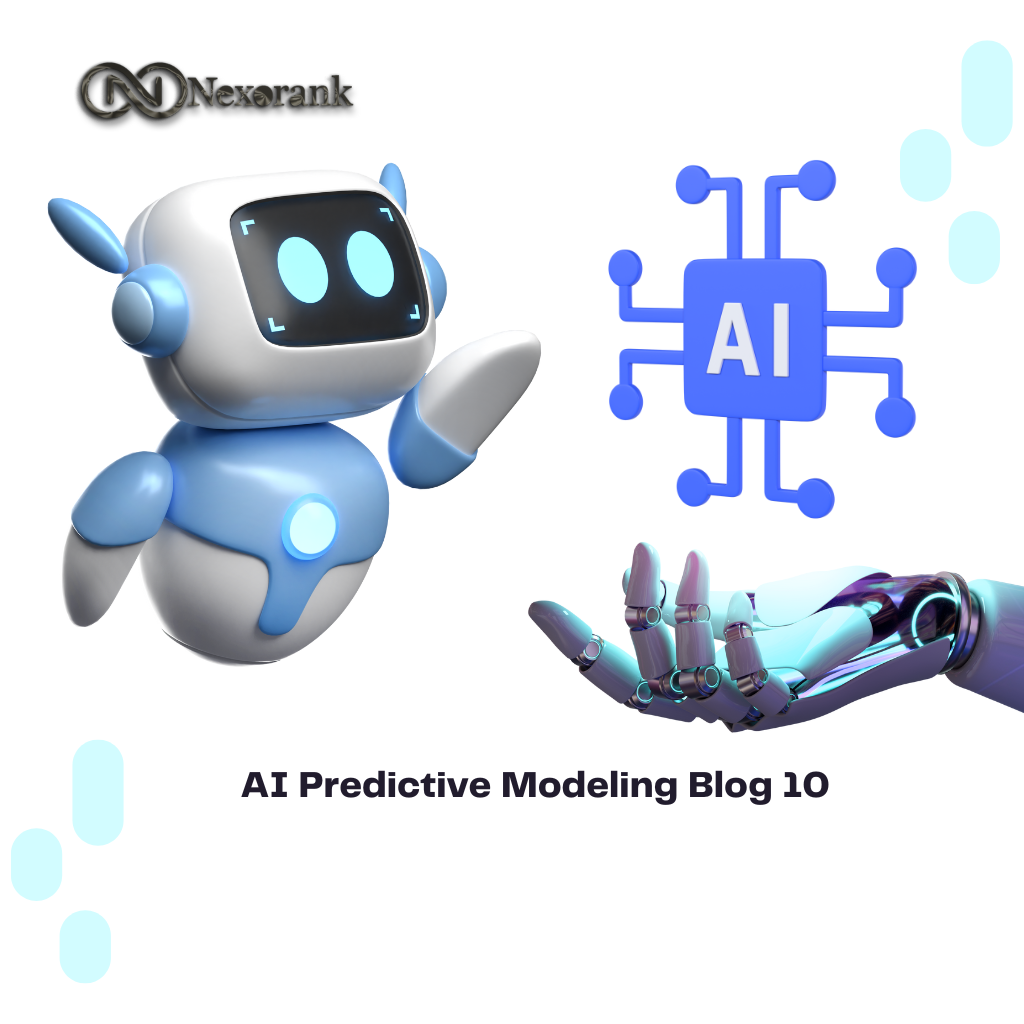Making strategic marketing decisions based on data and insights, rather than guesses or intuitions, is critical for driving growth. But wrangling volumes of data to extract meaningful insights can be difficult without the right tools.
That’s where artificial intelligence comes in. With predictive analytics powered by AI, marketers can uncover data-driven insights to inform key decisions on a whole new level.
Leveraging AI for Predictive Analytics in Marketing Strategy Optimization
Kipp Bodnar, CMO, HubSpot: When it comes to marketing, strategy and decision making, AI can help you. And there’s a few fundamental ways it can. The first is it’s a great data analyst. You can give [the AI] your data and ask it for insights. Ask it what specific marketing strategies it might recommend, based on the results and the data that you provided. The second thing it can do is it can play as your customer, give it all the information about your customer, and then have it give feedback on your marketing strategy. So, based on everything it knows about your customer, have it pretend to be your customer, and it will tell you what’s good, what’s boring, what it doesn’t understand. That’ll give you ultimate feedback on how to do it. AI is also really good at helping you understand how you might want to allocate your budget based on the data and strategy ahead. You can give it the constraints of your budget, the channels that work well for you, and it will give you some really great outputs as to how you might think about spending your money differently in the future.
Predictive analytics refers to the practice of using historical data, statistical algorithms, and machine learning techniques to make predictions about future events or behaviors. It involves applying advanced analytics and modeling techniques to interpret the patterns and relationships found in data to forecast future outcomes. In predictive analytics, data from various sources is analyzed to identify trends, patterns, and correlations. These insights are then used to build models that can make accurate predictions or forecasts about future events or conditions.
Instead of just reporting on what happened, AI predictive analytics provides a window into the future. Marketers can anticipate challenges, find new opportunities, and optimize plans ahead of time.
The Impact of Predictive Analytics on Marketing Strategy Optimization
Predictive analytics has transformed how marketing strategies are developed and executed. By using AI predictive models, data now empowers marketers to make
more informed, data-driven decisions across many aspects of the business. These models first forecast key metrics like sales, website traffic, and other KPIs. This allows optimal budgeting, staffing, inventory levels and operations planning. The models also determine high-risk customers likely to churn, enabling proactive retention efforts. Another key application is identifying the customer segments and channels most likely to engage, focusing ad spending where it will be most effective. Predictive analytics further aids in predicting periods of heightened customer interest, guiding timely campaign launches and promotions. Understanding which products and services customers need right now also facilitates well-informed product development. The models even detect potential issues by analyzing sentiment in customer interactions and feedback. Finally, predictive modeling reveals which additional products and services each individual customer will find most personally valuable.
Overall, predictive analytics optimizes key marketing decisions by providing insights into future trends and customer behaviors. Rather than intuition alone, data-driven decisions help marketers focus limited resources for maximum impact. The various applications of predictive modeling listed above all contribute to this empowerment of more strategic, insightful marketing based on real customer data.
For example, an ecommerce company can leverage predictive sales forecasting to anticipate a surge in demand for certain products next quarter. With this insight, they can proactively adjust inventory orders, digital marketing spend, and staffing levels ahead of time to capitalize on heightened interest.
Similarly, churn models identifying customers likely to cancel subscriptions enable marketers to get in front of potential losses. A proactive retention campaign focused on high-risk users is far more effective than reacting after cancellations occur.
Implementing Best Practices for AI Predictive Modeling in Marketing Strategy Optimization
AI-powered predictions transform decision-making from reactive to strategic. Marketers can bring the right products to market at precisely the right moments to align with customer needs. And campaigns can be hyper-targeted based on modeled behaviors and preferences for individual market segments. The key is applying predictive insights to optimize your marketing decisions. AI modeling provides a detailed map – it’s up to you to take the right roads to reach your destination.
To take advantage of AI predictive modeling, organizations need the right infrastructure and processes in place. Here are some best practices:
Ensure accessibility to predictive insights are accessible through interactive dashboards and modeling tools. With easy access, decisions can be made at all levels, not just by data scientists.
- Provide cross-functional training on how to interpret and apply predictive insights from AI models. Building this skillset creates a culture of data-driven decision making.
- Create templates for analyzing model outputs. Templates make it easy to simulate potential outcomes from “what-if” experiments by facilitating scenario planning.
Automate delivery of predictive insights through reports, alerts, and
notifications. With real-time data at their fingertips, teams can readily guide day-to-day decisions. - Track both model accuracy and business impact over time. Measurable results allow for continuously fine-tuning models and decision practices. Foster cross-functional collaboration between marketing, sales, and product teams, and data science. Aligning to a shared vision using predictive analytics enhances decisions across departments.
- Invest in change management as processes shift to become more
data-driven. Smoothing the adoption curve helps teams optimize new workflows.
The goal is to make data accessibility, model interpretation, and application of insights a seamless part of decision workflows. This allows organizations to fully leverage predictive analytics.
Maximizing Business Impact and Human Oversight in AI-Powered Predictive Analytics
It’s also important to optimize predictive AI’s impact on business outcomes. You can do this by monitoring lift in key performance metrics versus past performance or control groups. This quantifies the business value gained from data-driven decisions. Regularly fine-tune models to improve accuracy and maximize their ability to identify new opportunities and risks. Make sure to continuously increase adoption of predictive insights into workflows, automation and processes. More pervasive and optimized usage will help drive greater impact. Consider surveying decision makers regularly on influence of predictive analytics in their roles. Listen for gaps limiting adoption and address those pain points. Additionally, work toward fostering a culture of data-driven decision making through training and leadership emphasis on leveraging predictive insights.
For the best results, you should optimize not just the models themselves, but the business processes and workforce capabilities required to consistently apply predictive insights for maximum benefit.
But you shouldn’t leave everything up to AI. Megan Keaney Anderson, VP of marketing at Jasper.ai explains: I think it’s really important when you’re using AI for predictive modeling or for any kind of an insight that you are first understanding sort of that output from AI as a suggestion. It is a singular sort of consideration that you should factor in in making the final decision. Where I see a lot of people go wrong is they outsource too much of the decision making to AI and they just trust it to make the right call. And maybe it makes the best possible suggestion. But it should really be the person, you know, in charge, owning that responsibility to make that final decision. Question and verify the advice that you get from AI. Gut check it with yourself, and your own lived experience, and then make sure that at the end of the day it is a human making the decision rather than just auto-optimizing everything without any kind of interference from the actual marketer.
Predictive analytics powered by AI represents a seismic shift in marketing strategies and operations. With data-empowered decisions revealed through precise, automated anticipatory modeling, marketing is transformed from a reactive practice to a forward-looking science. Costly assumptions are replaced with insights derived directly from data. Short-term optimizations give way to strategic, future-gazing planning. But to fully leverage its power, organizations must invest in the processes, training, and cultural shifts needed to thoroughly incorporate data-driven methods. With the right foundation, predictive insights can unlock a new level of speed, precision, and impact for marketing.





















